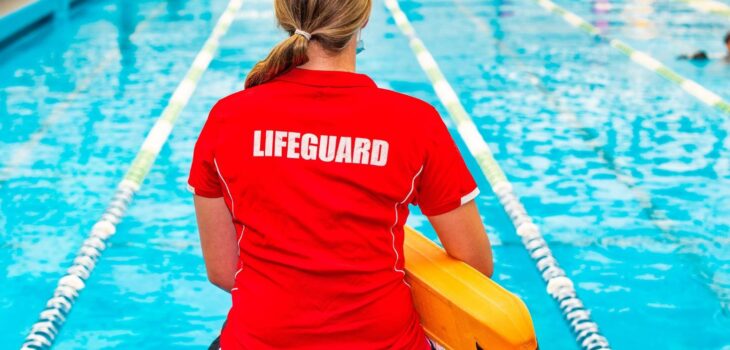 Health & Fitness
Health & Fitness
Rescue Ready: The Lifeguard’s Journey Begins
- by harlanelio
Becoming a lifeguard is more than just wearing a whistle and sunglasses at the pool or beach. It’s about responsibility, readiness, and the power to save lives. The journey of a lifeguard begins with one essential step: earning a Lifeguard Certificate. Whether you dream of working at a community pool, a busy beachfront, or even on a cruise ship, lifeguard certification opens the door to exciting and meaningful opportunities.
In this guide, we’ll explore what a lifeguard certificate is, its many benefits, how to get certified, and the incredible career opportunities that await those who are rescue ready.
What is a Lifeguard Certificate?
A Lifeguard Certificate is an official credential that proves an individual has completed all the required training in water rescue, CPR (cardiopulmonary resuscitation), first aid, and emergency preparedness. This certificate is usually issued by recognized organizations such as the American Lifeguard Association, American Lifeguard USA.
To obtain it, candidates must pass a combination of written tests, physical skills tests, and practical training. These tests ensure that every certified lifeguard is capable of reacting swiftly and efficiently in life-threatening situations.
The Benefits of Earning a Lifeguard Certificate
Getting certified as a lifeguard offers far more than a job—it brings lifelong skills and personal development. Here are the key benefits:
1. Lifesaving Skills
With a lifeguard certificate, you gain the ability to respond to drowning, injuries, cardiac emergencies, and more. These are skills you carry for life, helping not just others but possibly your friends and family too.
2. Physical Fitness
Lifeguard training is intense and pushes your physical limits. From swimming laps to performing water rescues, your endurance, strength, and overall fitness level improve drastically.
3. Job Opportunities
With a recognized certification, you become eligible for lifeguard jobs in various environments—pools, lakes, beaches, water parks, gyms, resorts, and even cruise ships.
4. Confidence and Leadership
Lifeguards must remain calm under pressure. Through training, you’ll develop problem-solving skills, boost your confidence, and emerge as a leader who others can rely on in emergencies.
5. Work-Life Balance
Many lifeguard jobs offer flexible hours, making it an ideal role for students, seasonal workers, or individuals looking for part-time opportunities.
6. International Opportunities
Some certifications, especially from organizations like the American Lifeguard Association, are recognized worldwide. This means you could find jobs abroad or while traveling.
How to Get Your Lifeguard Certificate
If you’re inspired to begin your journey, here are the steps to become a certified lifeguard:
1. Meet the Basic Requirements
-
Minimum Age: Usually 15 or older
-
Swimming Skills: You must pass a swim test, which includes swimming a set distance, treading water, and retrieving a submerged object.
2. Enroll in an Accredited Lifeguard Course
Choose a reputable organization such as:
-
American Lifeguard Association
Make sure the course includes CPR, First Aid, AED, and water rescue components.
3. Complete the Training
Training typically lasts 25–30 hours and includes both classroom learning and hands-on water practice. You’ll learn about:
-
Water rescue techniques
-
Emergency action plans
-
Spinal injury management
-
Victim recognition
4. Pass the Final Exam
You must pass both written and practical exams to earn your certification. After successful completion, you’ll receive your lifeguard certificate, usually valid for 2 years.
What Happens After Certification?
Congratulations—you’re now rescue ready! Here’s how you can turn your new certification into real-world success:
1. Apply for Lifeguard Jobs
With your certificate in hand, you can start applying for positions in a variety of locations:
-
Public Pools: Local city or county pools are always hiring certified lifeguards.
-
Private Clubs and Gyms: Many fitness centers and swim clubs require certified staff.
-
Beaches and Lakes: Seasonal opportunities open up during the summer months.
-
Resorts and Hotels: These offer year-round roles with great perks and beautiful locations.
-
Cruise Lines: Adventure and a job wrapped in one—you can lifeguard while traveling the world.
2. Join a Lifeguard Organization
Becoming part of an organization like the American Lifeguard Association connects you to job boards, recertification opportunities, networking, and further education.
3. Stay Certified
Lifeguard certification typically needs to be renewed every two years. Make sure to stay up-to-date with recertification courses, which are often shorter than the initial training.
Best Places to Begin Your Dream Lifeguard Career
If you’re wondering where to apply or dream of working in the best environments, here are some top places for lifeguard jobs:
1. American Lifeguard USA Training Centers
These are excellent places not just for training, but also for connecting with job opportunities.
2. Local Government and Recreation Departments
City pools, county parks, and municipal beaches offer stable employment and benefits.
3. Luxury Resorts and Hotels
Look for lifeguard openings in beachside resorts, mountain getaways, and hotels with pools.
4. Theme Parks and Water Parks
Places like Disney, Six Flags, and other amusement parks employ hundreds of lifeguards each season.
5. Cruise Lines
Companies like Carnival and Royal Caribbean hire certified lifeguards for onboard pools and private island beaches.
6. College and University Campuses
Many universities have aquatic centers and need lifeguards during the academic year and summer.
Make It Your Dream Job
Being a lifeguard can start as a part-time gig but evolve into something much bigger:
-
You can become a head lifeguard or aquatic supervisor
-
Get certified as a lifeguard instructor and train others
-
Dive into emergency services such as EMT or firefighter careers
-
Use it as a stepping-stone toward public safety, physical education, or marine rescue fields
It’s a job that combines excitement, purpose, and real impact. Saving lives while working in dynamic environments can be the foundation of a fulfilling career.
Also read About: Where Can I Buy Erectile Dysfunction Pills?
Conclusion: Your Lifeguard Journey Starts Here
The path to becoming a lifeguard begins with one step: earning your Lifeguard Certificate. With the skills, confidence, and opportunities that follow, you’ll be equipped not just for a job—but for a lifestyle of service, fitness, and leadership. Whether you’re patrolling the ocean shore or guarding a community pool, you’ll be making a difference every day.
So, are you ready to be rescue ready? Your journey as a lifeguard starts now—and it just might become your dream job.









